The Hidden History of North Park
Born out of the Great Depression, North Park is home to countless historical remnants of its 85-year history.
With its onimous appearance, North Park’s Fountain of Youth is a unique example of New Deal-era construction.
March 2, 2023
North Park is famous for many recreational activities, but some aspects of the park’s history are invisible to the casual observer. Aside from the typical activities of fishing or kayaking on the 75-acre lake, North Park’s 3,000 acres are home to an abandoned ballistic missile silo, ruins from the building boom spurred by the Great Depression, and an overgrown road that has long been storied to be haunted.
The resolution to establish North Park was passed in 1927 by County Commissioner Edward Babcock, who today has an important road named in his honor that runs along North Park Lake and through the North Hills. Babcock had the foresight to preserve a vast tract of wilderness in a time when suburban growth had yet to truly pick up in the North Hills. (It would reach its zenith after McKnight Road was completed in 1946.) Construction of park facilities commenced at a slow pace, but during the Great Depression, programs meant to help the unemployed sparked a building boom in infrastructure across America’s public parks, including Pittsburgh’s newly-established North and South Parks.
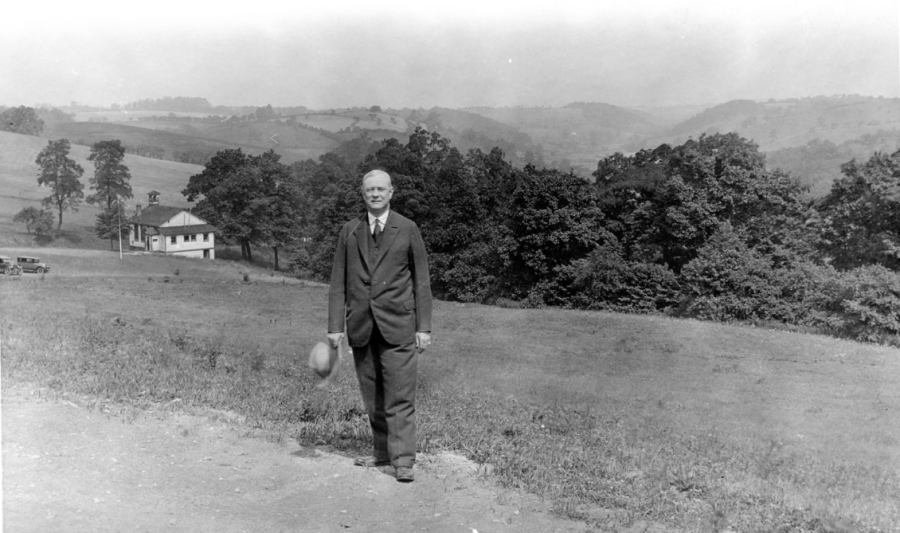
The Civilian Conservation Corps–an early program of FDR’s New Deal – laid the groundwork for North Park by planting trees and constructing picnic pavilions across the park’s 3,000 acres, many of which remain today. Through the efforts of the CCC, North Park also was provided with a tree cover that now has flourished into a lush canopy. Later, other New Deal programs, including the Works Progress Administration (WPA) and Public Works Administration (PWA), would be instrumental in building park landmarks like the Boathouse, Swimming Pool, and Lodge. North Park’s man-made lake was also dug in the 1930s by the PWA, following the plans of landscape architect Paul B. Riis.
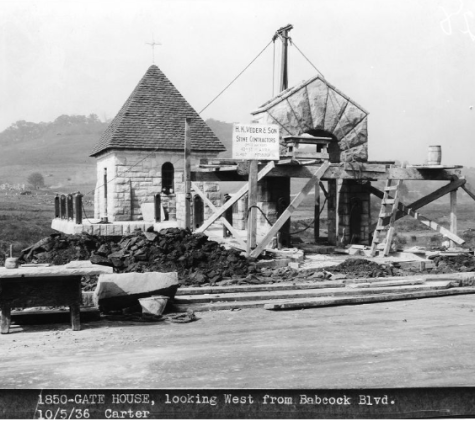
In its early years, North Park had some quirky attractions that one would not expect to find in a typical county park. Surprisingly, beginning in December of 1927, the park had its own herd of American bison in a dedicated preserve. A few months later, in May of 1928, several Native American teepees also arrived, as Chief Eddie Big Beaver had come to help care for the bison from the Blackfeet Reservation in Browning, Montana. The reservation was located along Walters Road on Flagstaff Hill, which is the highest point of the park and is still crowned by a flag pole today.

Chief Eddie Big Beaver returned to the reservation in 1931, and the American bison were resultingly removed from North Park. However, although another Native American family from the Blackfeet Reservation also left Pittsburgh’s South Park, care of the South Park bison was taken over by Allegheny County Parks. The bison of the South Park Game Preserve remain that park’s most famous attraction today.
Another unique feature of early North Park was a natural spring turned tourist attraction. Looking to the right when driving down Kummer Road, if you blink you might miss the ominous structure nestled in a wooded hillside. Above the entrance to this squat building, the name “Fountain of Youth” is embossed into stone that is slowly being overtaken by moss. Although the water from the Fountain of Youth was no different from any other natural spring, advertising is often more meaningful than truth.
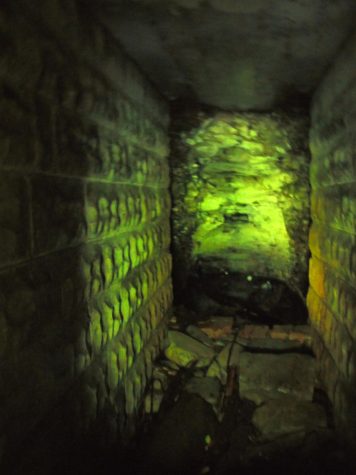
Built over a natural woodland spring in 1938, the age-reducing water was deemed unfit for human consumption in 1955. Although people who make pilgrimages (more like a quick jump over a stream) to the fountain can no longer drink its water, the spring still flows, drip by drip, just as it has for hundreds of years.
One surprising feature of North Park has somewhat survived to the present day, but it can only be seen from an aerial perspective. Along Pearce Mill Road, just above the area now home to the tennis courts, one acre of pine trees was planted in the shape of a five-point star. Dating back to 1938, the trees were another New Deal project by the Works Progress Administration.
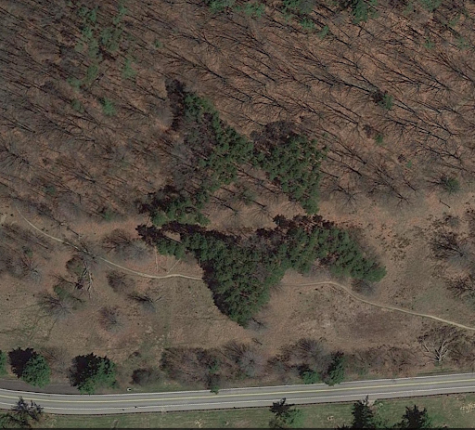
Elsewhere in the park, trees in the shape of the Allegheny County shield were supposedly planted, but no photos exist to confirm this feature’s existence. Although the decades have taken their toll and the star is no longer as distinct as it once was, its shape can still be seen on satellite maps, a reminder of the sheer variety of features that the New Deal left scattered across the American landscape.
Jumping forward twenty years after the Great Depression, North Park would again be used in another great American crisis: the Cold War. Whereas the park had earlier been used as a weapon to defeat unemployment, this time the park would be home to a weapon many times more deadly in sheer force, a powerful Cold War missile.
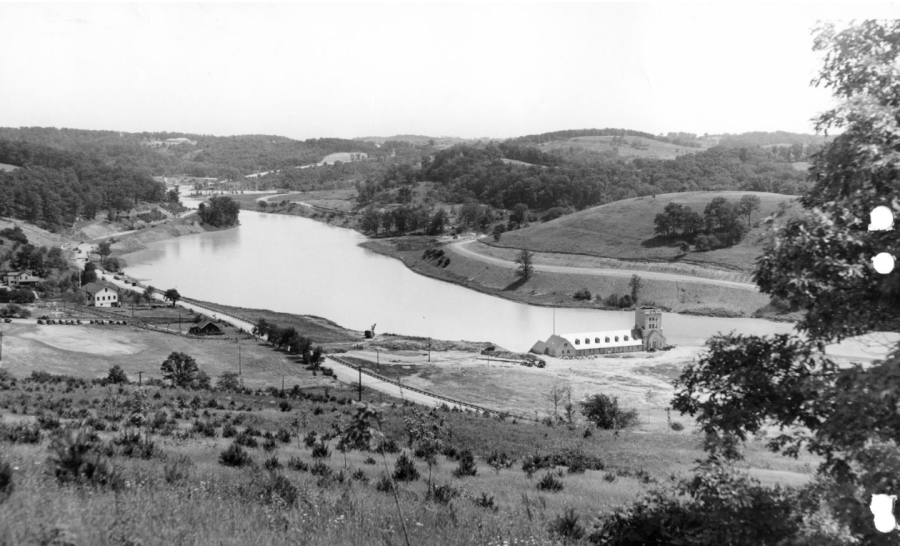
In the early years of the Cold War, tensions with the Soviet Union led to the installation of almost 300 Nike missile sites in the US, including 12 sites in the Greater Pittsburgh area. Once raised from its underground base and launched, a 1,200-pound Nike missile could travel at speeds up to 1,500 miles per hour, with a range of about 100 miles.
In North Park, the Allegheny County Police/Fire Academy–located near Kummer Road–occupies the former site of a Nike missile base, with the bunker still sitting abandoned after decades of disuse.
The massive weapons, stored underground beginning in 1955, required 60 men to be on duty, ready to launch the missile within a 20-minute notice.
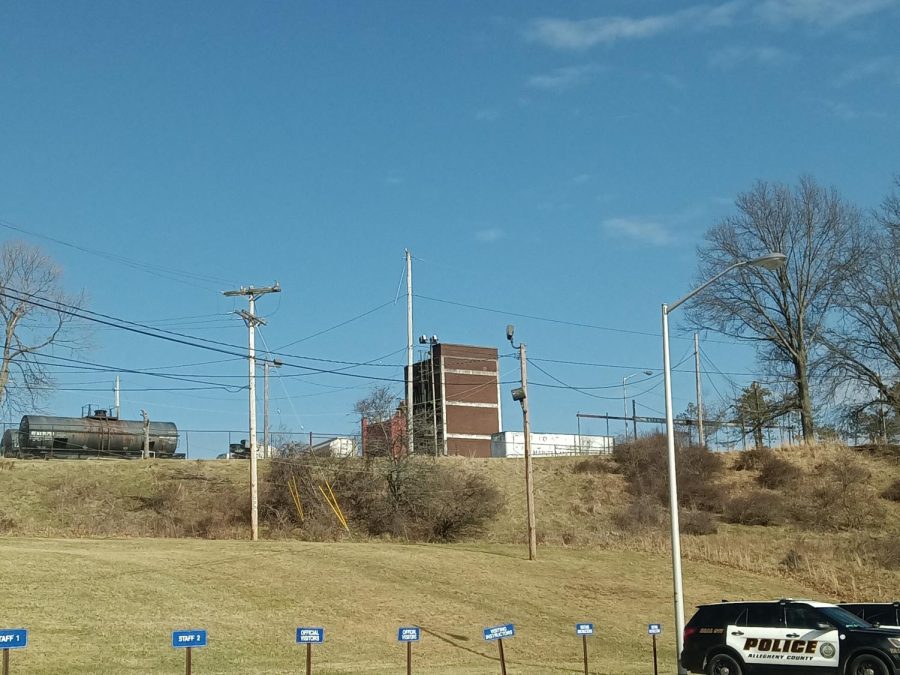
Of course, without any attack from the Soviet Union, the missile was never put into service, and it eventually was shuttered in 1963. The missile was removed, leaving an empty bunker that remains sealed off to the public.
Surprisingly, Allegheny County’s largest playground holds many connections to American history as a whole, as well as some often-forgotten points of interest that are worth a look. So the next time you’re driving around the lake, try to think of a time before it existed, a time when today’s shimmering water was nothing but a grassy field. But even more, remember the hard-working people–the WPA, CCC, and PWA–who made the park a reality so many years ago. Without them, we would never have the pleasure of enjoying such a great asset to our community.


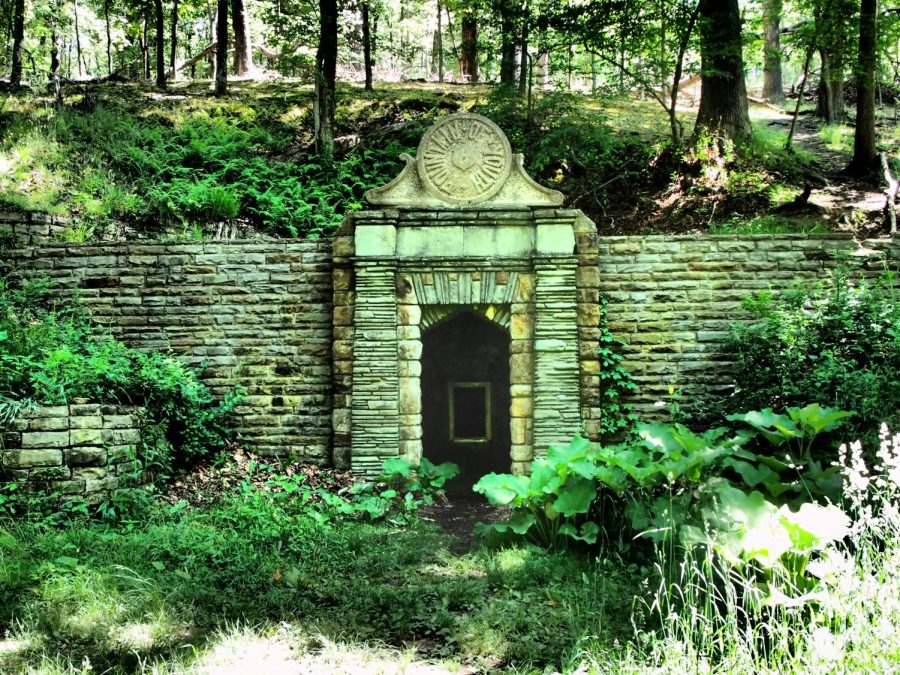











Jean POTTS • Jun 19, 2024 at 1:04 pm
I REMEMBER Buffalo roaming a hill – 1940 era.. Dad used to drive us by just to spot them. Learned how to swim at the pool, which was HUGE and made you wade through murky water to clean your feet to get outside. Oh that red brick was hot on the feet . ? . Loved our Sunday picnics in a grove with swimming afterwards.. Loved the cheese popcorn. ! Had our sr. high school picnic there. Rode my babies on my bike around the lake. Ice skating on the lake BEFORE the rink was built. What a treasure. Only now do I appreciate it so close to our home.
joAnn • Mar 12, 2024 at 3:59 pm
i walked around the lake every day for many years. it was beautiful and so peaceful.
Helen Hurilla Whipplle • Apr 1, 2023 at 4:49 pm
I love this kind of history. This article illustrates how the park and our country evolved over the years. Well written and so informative.
Fred Copeland • Mar 5, 2023 at 9:17 pm
Thank you for that article. I used to live right at the top of the hill on the left side Babcock boulevard .Copeland’s my mother had a business there It was called leandre poodles .I grew up there from 10 years old until we moved in ’79 . Perfect place as a child to grow so much to do around the lake and the whole area.
Christiane • Mar 4, 2023 at 10:33 am
Very interest article, from now on I’ll see the Park with another look.
Courtney Sikora • Mar 3, 2023 at 10:23 pm
Brilliant article! Thank you for gathering and sharing all of this fascinating information!
Christina walzl • Mar 2, 2023 at 3:42 pm
I love reading about history in north Park.Beause I have been going there for years and taking my children there. I can never get enough. Please keep writing your story was very interesting.
Walter Winkowsk • Mar 2, 2023 at 1:05 pm
Thanks, a very interesting read.